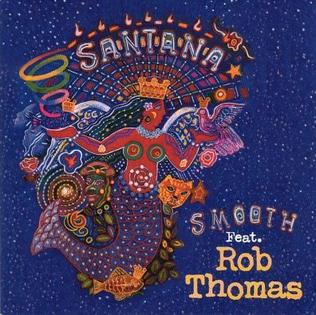 Nirvana’s “Come as You Are” stands as one of the most iconic tracks of the early 1990s, encapsulating the angst, innovation, and raw emotional power of the grunge movement. Released in 1991 on the band’s groundbreaking album Nevermind, the song was a defining moment not only for Nirvana but for an entire generation of alternative rock fans. Its haunting riff, ambiguous lyrics, and Kurt Cobain’s distinctively melancholic vocals create a track that is both musically compelling and emotionally resonant, bridging mainstream appeal with the authenticity and edge of the underground Seattle scene.
Nirvana’s “Come as You Are” stands as one of the most iconic tracks of the early 1990s, encapsulating the angst, innovation, and raw emotional power of the grunge movement. Released in 1991 on the band’s groundbreaking album Nevermind, the song was a defining moment not only for Nirvana but for an entire generation of alternative rock fans. Its haunting riff, ambiguous lyrics, and Kurt Cobain’s distinctively melancholic vocals create a track that is both musically compelling and emotionally resonant, bridging mainstream appeal with the authenticity and edge of the underground Seattle scene.
Unlike many of Nirvana’s heavier, more aggressive songs, “Come as You Are” occupies a liminal space: melodic yet gritty, accessible yet deeply introspective. It demonstrates the band’s ability to craft songs that are catchy without sacrificing emotional complexity, capturing the contradictions that defined Cobain’s songwriting and the ethos of grunge itself. The track’s enduring popularity lies in its ability to resonate with listeners on multiple levels—musically, emotionally, and culturally.
Nirvana and the Rise of Grunge
By the early 1990s, Seattle had become the epicenter of a burgeoning music scene defined by raw emotion, distorted guitars, and a DIY ethos. Nirvana emerged as one of the key figures in this movement, alongside bands like Pearl Jam, Soundgarden, and Alice in Chains. Their 1989 debut album, Bleach, had established their presence, but it was Nevermind that catapulted them into the mainstream.
“Come as You Are” was the second single from Nevermind, following the explosive success of “Smells Like Teen Spirit.” While “Smells Like Teen Spirit” was a cultural phenomenon that brought grunge into the global spotlight, “Come as You Are” showcased a different side of Nirvana—a song that was more melodic, contemplative, and lyrically nuanced, yet still imbued with the band’s signature edge. It solidified Nirvana’s reputation as a band capable of depth and subtlety, balancing mass appeal with artistic integrity.
The Song’s Origins and Guitar Riff
One of the most instantly recognizable elements of “Come as You Are” is its guitar riff. Written by Kurt Cobain, the riff is simple yet hypnotic, employing a combination of minor intervals and clean, chorus-tinged tone to create an eerie, underwater-like atmosphere. Its repetitive, almost mantra-like quality draws listeners in immediately, providing a sonic anchor for the song while reinforcing its introspective mood.
The riff’s subtle dissonance adds tension beneath the song’s seemingly serene surface, hinting at the emotional complexity that Cobain often conveyed in his music. The riff’s structure also exemplifies Nirvana’s ability to blend pop sensibilities with alternative rock grit, a hallmark of their songwriting that made their music both accessible and deeply affecting.
Lyrics and Themes
Lyrically, “Come as You Are” is layered with ambiguity and contradiction, reflecting Cobain’s fascination with human complexity and his own inner struggles. The song’s chorus—“Come as you are, as you were, as I want you to be”—invites multiple interpretations, simultaneously offering acceptance, irony, and introspection. It resonates as an anthem of authenticity, urging listeners to embrace themselves while subtly acknowledging the impossibility of fully understanding or controlling others.
Verses such as “Take your time, hurry up / The choice is yours, don’t be late” suggest a tension between urgency and patience, mirroring the contradictions present in life and relationships. The lyrics reflect Cobain’s ongoing exploration of alienation, identity, and human vulnerability, themes that permeated much of Nirvana’s work.
The song’s ambiguity is part of its power, allowing listeners to project their own experiences and emotions onto the track. Its open-ended nature, combined with Cobain’s evocative delivery, makes “Come as You Are” a song that resonates across generations and personal experiences.
Musical Arrangement and Sonic Texture
“Come as You Are” demonstrates Nirvana’s ability to blend simplicity and sophistication in its arrangement. Krist Novoselic’s bassline is prominent and melodic, reinforcing the main riff while providing harmonic depth and rhythmic drive. Dave Grohl’s drumming is precise and dynamic, alternating between restrained verse patterns and explosive choruses, mirroring the song’s emotional ebb and flow.
The clean guitar tones in the verses contrast sharply with the heavier, overdriven choruses, creating a sense of tension and release that drives the song forward. This dynamic interplay is characteristic of Nirvana’s approach to songwriting—melding quiet introspection with explosive catharsis to reflect the dualities of emotion, experience, and Cobain’s own psyche.
Cobain’s vocal delivery is another crucial element. His voice ranges from intimate and almost conversational in the verses to impassioned and urgent in the choruses. This fluctuation mirrors the song’s themes of contradiction and tension, making the track emotionally immersive. Background vocal overdubs further enhance the sense of space and depth, reinforcing the song’s ethereal, almost haunting atmosphere.
Production and Studio Craft
Produced by Butch Vig, Nevermind marked a significant evolution in Nirvana’s sound. Vig’s production on “Come as You Are” emphasized clarity and balance, ensuring that each instrument was distinct while maintaining the overall grunge aesthetic. The use of chorus effects on the guitar, careful layering of vocals, and polished mixing techniques created a track that was both radio-friendly and true to the band’s raw energy.
The production highlights the song’s contrasts—the interplay of clean and distorted guitar, soft verses and loud choruses, lyrical introspection and melodic accessibility. Vig’s ability to capture the band’s energy without over-polishing it helped “Come as You Are” retain its authenticity, contributing to its enduring appeal.
Cultural Impact and Reception
“Come as You Are” was a commercial and critical success, reaching number 32 on the Billboard Hot 100 and topping the Modern Rock Tracks chart. It solidified Nirvana’s presence in mainstream music while highlighting the band’s ability to balance grunge intensity with melodic accessibility.
Critics praised the song for its haunting riff, introspective lyrics, and emotional depth. Its music video, featuring surreal, water-based imagery, further reinforced the song’s ethereal and ambiguous qualities, becoming a staple on MTV and cementing its status as a defining track of the early 1990s.
The song’s influence extends beyond its immediate commercial success. It has been covered by numerous artists, referenced in films and television, and remains a touchstone for musicians exploring the balance between introspection, melody, and raw emotional power. Its riff and lyrical phrasing have become iconic, emblematic of both Nirvana’s style and the grunge era as a whole.
Live Performances and Legacy
In live settings, “Come as You Are” takes on a heightened intensity. Nirvana’s performances often emphasized the dynamic contrasts inherent in the song, with Cobain’s voice alternating between soft intimacy and raw power. The band’s tight musicianship and ability to convey emotion in real-time made live renditions of the song particularly compelling, offering fans a visceral connection to its themes of alienation and authenticity.
The song has remained a staple of Nirvana’s legacy, frequently included in compilations, tribute performances, and live releases. Its melodic accessibility ensures that it appeals to casual listeners, while its lyrical depth and grunge sensibility continue to resonate with dedicated fans and musicians alike.
Why ‘Come as You Are’ Endures
The timelessness of “Come as You Are” lies in its balance of accessibility, emotional depth, and musical innovation. It is a song that is immediately catchy yet layered with meaning, combining memorable riffs, dynamic arrangements, and introspective lyrics to create a track that is both entertaining and emotionally resonant.
Its exploration of themes like authenticity, alienation, and human contradiction allows it to transcend its era, resonating with listeners who have felt disconnected, misunderstood, or conflicted. At the same time, its production, instrumentation, and vocal delivery ensure that it remains sonically compelling, appealing to fans of rock, alternative, and mainstream music alike.
The song’s influence on alternative rock and post-grunge music is undeniable. Many bands in the 1990s and 2000s drew inspiration from Nirvana’s ability to blend melodic hooks with raw emotionality, and “Come as You Are” stands as a prime example of this approach. Its riff, chorus, and vocal phrasing have become part of the rock canon, demonstrating the enduring power of well-crafted songwriting.
Conclusion: The Eternal Echo of Grunge
“Come as You Are” is more than a hit single; it is a statement of identity, vulnerability, and musical innovation. Its haunting riff, introspective lyrics, and dynamic arrangement capture the contradictions and complexities of human experience, reflecting both Kurt Cobain’s personal struggles and the broader ethos of grunge music.
The song’s enduring appeal lies in its ability to balance accessibility and depth, offering listeners both immediate melodic gratification and emotional resonance. Its influence on alternative rock, its presence in popular culture, and its continued relevance in live performances all speak to its lasting impact.
Ultimately, “Come as You Are” remains a defining moment in Nirvana’s career and a touchstone of 1990s rock. It is a song that invites listeners to confront their contradictions, embrace their authenticity, and experience the cathartic power of music. From its hypnotic riff to its poignant chorus, it continues to resonate, a timeless anthem of vulnerability, defiance, and the raw beauty of grunge.
“Come as You Are” is an enduring testament to the power of music to capture the human experience—melancholic, defiant, and unforgettable.


